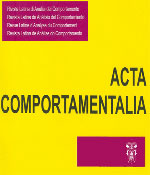Nature of the properties employed in the training of inclusion and their effect on the solution of syllogisms
DOI:
https://doi.org/10.32870/ac.v6i1.18242Abstract
There were two purposes to this study: 1) to directly promote logical reasoning in second-grade public school children, and 2) to evaluate the effect of the properties (apparent or in apparent) involved an inclusion task on the execution of abstract syllogisms. In a first phase we selected 21 second-grade children able to solve only one to three syllogisms over twelve. In a second phase, these children were divided in three groups. Subjects in Group 1 received training on inclusion tasks involving apparent properties (color, shape, size, etc.). Subjects in Group 2 received training on inclusion tasks involving in apparent properties. Subjects in Group 3 (a control group) merely participed in board games. In the third phase, a test of 12 syllogisms divided in familiar concrete, unfamiliar-concrete and abstract, was applied once again to all children. Children in group I increased their number of correct answers to familiar and unfamiliar syllogisms but not to abstract syllogisms; children in group 2 increased their number of correct answers on familiar, unfamiliar and abstract syllogisms; finally, children in the control group did not improve their performance on any type of syllogisms. The results are discussed in terms of the purposes explicity stated and also with regard to their implications for organismic and enviroment-based conceptions of development and the language-thought relationship.
Downloads
Downloads
How to Cite
Issue
Section
License

<a rel="license" href="http://creativecommons.org/licenses/by-nc-sa/4.0/"><img alt="Licencia de Creative Commons" style="border-width:0" src="https://i.creativecommons.org/l/by-nc-sa/4.0/88x31.png" /></a><br />Este obra está bajo una <a rel="license" href="http://creativecommons.org/licenses/by-nc-sa/4.0/">licencia de Creative Commons Reconocimiento-NoComercial-CompartirIgual 4.0 Internacional</a>.






